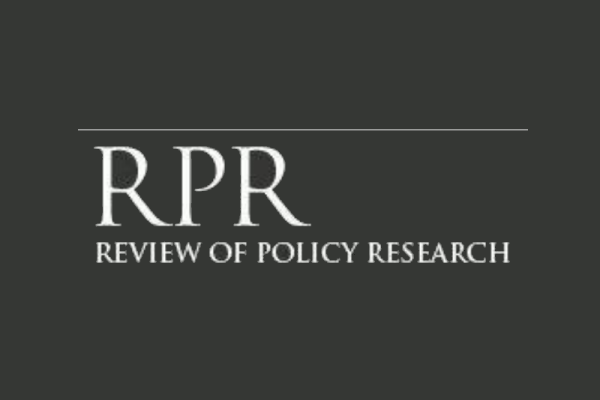


guest-edited by Mattia Casula (University of Bologna, mattia.casula@hotmail.it) Yves Steinebach (University of Oslo & LMU Munich, yves.steinebach@gsi.uni-muenchen.de). In case of questions, please contact the guest editors directly via email.
Governments must deal with an ever-increasing number of societal and environmental challenges. These issues range from, for instance, climate change, rising inequality, and global pandemics to the management of immigration flows. Governments typically address and try to solve these issues by the production of new public policies (Adam, et al. 2019). These new policies, however, imply new implementation tasks that directly turn into additional work burdens for those in charge of their implementation (Li et al.2022; Zarb and Taylor 2022).
What is more, governments face fundamental fiscal and ideological barriers to constantly expand the capacities necessary to properly execute and enforce the policies produced (Bozeman, 2000; Limberg, et al. 2021). There are various reasons for these constraints including globalized financial markets that limit the government’s capacity to extract resources from the economy and society as well as the dominance of neoliberal ideas such as austerity (Lobao, et al. 2018). As a consequence of these ‘diverging’ trends of ever-more policies up for implementation and limited administrative capacities and resources available, it is highly important to optimize implementation arrangements in a way that allow for the highest level of implementation effectiveness (Casula, 2022). Unfortunately, however, the current state of the research on implementation arrangements suffers from several blind spots that make it difficult to propose suitable solutions (see Sager and Gofen, 2022).
Implementation arrangements are of long-standing concern in public policy and public administration research. The major debate has centered on the question of whether public policies are typically implemented through a “single lonely organization” (Peters, 2014: General Editors: Nils C. Bandelow & Johanna Hornung | Editorial Director: Ilana Schröder rpr@ipsonet.org 132) or if it needs a “multiorganizational analytic perspective” (Hjern and Porter, 1981: 201) to fully understand and grasp the implementation process (Sætren and Hupe, 2018). Other scholarly contributions, in turn, have analyzed changes in the composition of the type of actors (governmental/business/non-profit) involved in implementation arrangements (Hall and O’Toole 2000). A good deal of literature on implementation found that implementation arrangements generally, and increasingly, involve multiple actors from both the public and the private sectors (Thomann, et al. 2018; Steinebach 2021). While existing scholarship thus provides some knowledge on the inter-temporal dynamics of implementation arrangements, we know much less about the choice different implementation arrangements. Why do governments in different spatial contexts opt for different implementation arrangements - and this even in the case of quite similar policy measures? What determines the ‘choice’ of certain implementation arrangements? And what difference does this choice ultimately make for the functioning of public policies? The existing scholarship provides little to no answer to these questions. This is particularly surprising given that Schneider and Ingram (1997) considered decisions regarding the implementation arrangements as “fundamental empirical elements of public policy” (Schneider and Sidney 2009: 104).
This Special Issue intends to fill this gap by testing the following conjectures and expectations that are: (1) the choice of implementation arrangements is guided by functional considerations; (2) the choice of implementation arrangements is guided by political considerations; (3) the choice of implementation arrangements is determined by the actors' capacities in shaping the implementation capacities; (4) the choice of implementation arrangements is driven by path dependence and policy-administrative legacy; (5) the choice of implementation arrangements is based on the characteristics of the adopted policy instruments. Moreover, we expect that (6) the choice of implementation arrangements ultimately makes a difference in the performance (effectiveness, efficiency, legitimacy) of public policies.
This Special Issue welcomes both theoretical and empirical contributions. Topics related to new societal and environmental challenges (e.g., climate change, pollution, poverty reduction of equality, sustainable mobility, digital society, etc.) and the study of the General Editors: Nils C. Bandelow & Johanna Hornung | Editorial Director: Ilana Schröder rpr@ipsonet.org implementation arrangements to cope with the consequences of the COVID-19 outbreak (e.g., vaccination policy, economic recovery packages, etc.) are particularly appreciated. Contributions using a qualitative or quantitative approach are equally welcome.
Preliminary Schedule:
• Submission of articles until September 2023
• First round of reviews until November 2023
• Revision of articles until January 2024
• Second round of reviews until March 2024
• Second revision of articles until May 2024
• Feedback/further revision if necessary/production of articles until July 2024
• Publication of the issue in September 2024
REFERENCES
Adam, C., Hurka, S., Knill, C., & Steinebach, Y. (2019). Policy accumulation and the
democratic responsiveness trap. Cambridge: Cambridge University Press.
Casula, M. (2022). How different multilevel and multi-actor arrangements impact policy
implementation: evidence from EU regional policy, Territory, Politics, Governance,
DOI: 10.1080/21622671.2022.2061590
Hall TE, O’Toole LJ. (2000). Structures for Policy Implementation: An Analysis of National
Legislation, 1965-1966 and 1993-1994. Administration & Society. 31(6):667-686.
doi:10.1177/00953990022019281
Hjern, B. & Porter, D.O. (1981). Implementation Structures: A New Unit of Administrative
Analysis. Organization Studies. 2(3): 211-227.
Li, B., Tang, S-Y, Wang, F., & Yin, H. (2022). Policy implementation through performance
measurement: A study of water pollution remediation in China's Huai River Basin.
Review of Policy Research, 00, 1– 29. https://doi.org/10.1111/ropr.12496
Limberg, J., Steinebach, Y., Bayerlein, L. & Knill, C. (2021). The more the better? Rule
growth and policy impact from a macro perspective. European Journal of Political
Research. 60: 438-454.
Lobao, L., Gray, M., Cox, K. & Kitson, M. (2018). The shrinking state? Understanding the
assault on the public sector, Cambridge Journal of Regions, Economy and Society,
11(3): 389–408.
Peters B. G. (2014). Implementation structures as institutions. Public Policy and
Administration. 29(2): 131-144.
Sætren, H. and Hupe, P.L. (2018), Policy Implementation in an Age of Governance, in E.
Ongaro and S. van Thiel (eds.), The Palgrave Handbook of Public Administration and
Management in Europe, Basingtoke: Palgrave Macmillan, pp. 553-575.
Sager, F. and Gofen, A. (2022), The polity of implementation: Organizational and
institutional arrangements in policy implementation, Governance, 35(2): 347-364.
General Editors: Nils C. Bandelow & Johanna Hornung | Editorial Director: Ilana Schröder rpr@ipsonet.org
Schneider & Ingram (1997). Policy Design For Democracy. Kansas City: University
Press of Kansas.
Schneider, A. & Sidney, M. (2009), What Is Next for Policy Design and Social Construction
Theory? Policy Studies Journal, 37: 103-119.
Steinebach, Y. (2021), Instrument choice, implementation structures, and the effectiveness
of environmental policies: A cross-national analysis. Regulation & Governance.
Thomann, E., Hupe, P. & Sager, F. (2018). Serving many masters: Public accountability in
private policy implementation. Governance. 31: 299–319.
Zarb, S. & Taylor, K. (2022), Uneven local implementation of federal policy after disaster:
Policy conflict and goal ambiguity. Review of Policy
Research, 00, 1– 25. https://doi.org/10.1111/ropr.12478
More info at this link.

